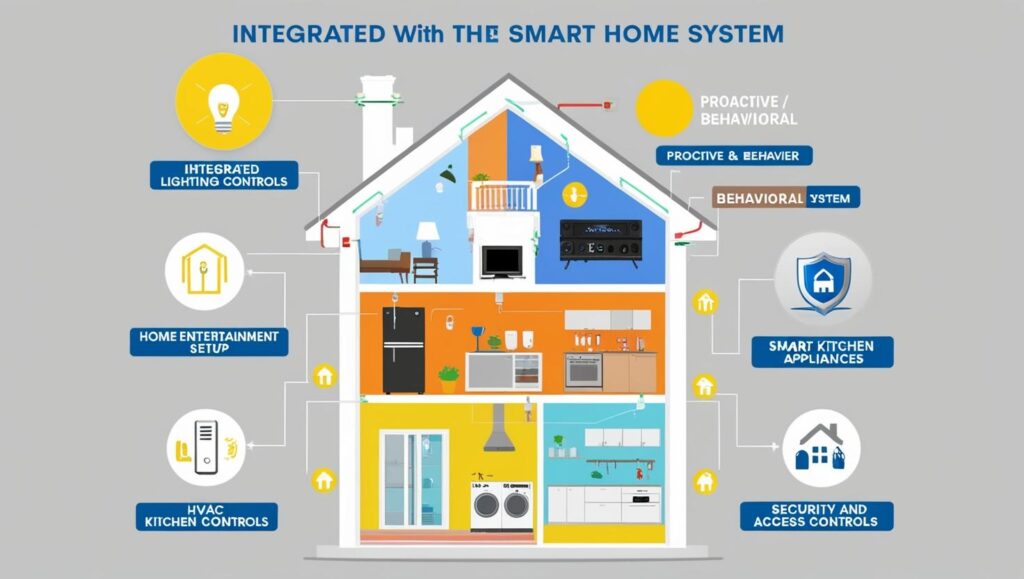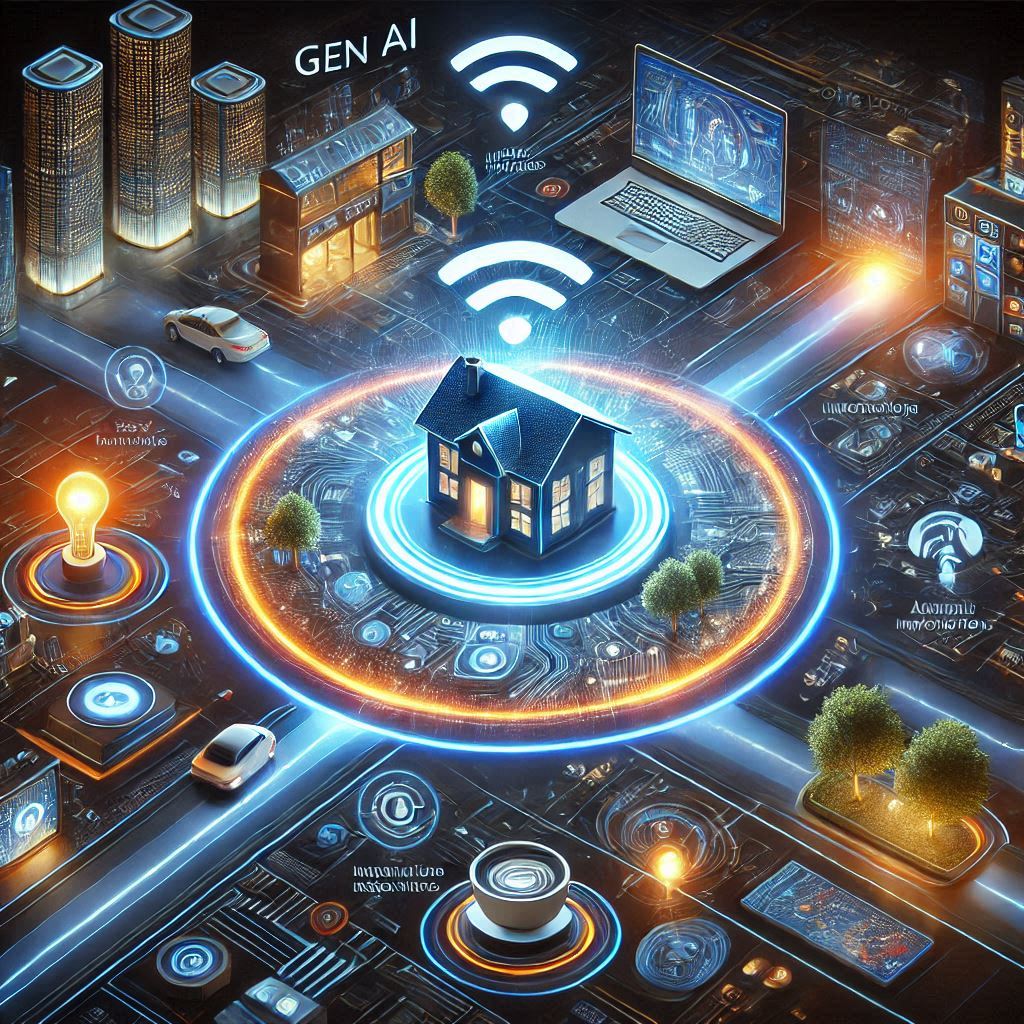The smart home market in United States is undergoing a rapid transformation, with an increasing number of consumers adopting innovative solutions that bring automation, convenience, security, and energy efficiency into their homes. The convergence of technology, consumer demand, and enhanced connectivity is propelling the market into new heights. By 2025, the US smart home market is expected to experience significant growth, offering a glimpse into a future where homes are smarter, more efficient, and more connected than ever before.

The Rise of Smart Homes: A Market on the Move
The concept of a “smart home” has evolved from a niche interest to a mainstream phenomenon. What once seemed like futuristic technology is now becoming a part of everyday life for millions of people. Smart homes leverage Internet of Things (IoT) devices and wireless technologies to enable homeowners to control and automate various aspects of their living environment, such as lighting, security, climate control, entertainment systems, and even appliances, all through their smartphones or voice commands.
Key drivers contributing to the growth of the US smart home market include:
Consumer Demand for Convenience: As consumers seek increased convenience, smart home technologies, such as voice assistants (e.g., Amazon Alexa, Google Assistant) and connected devices, allow users to control various functions of their homes from anywhere in the world.
Advances in IoT and Connectivity: The expansion of 5G networks and the growing availability of fast, reliable internet services have accelerated the adoption of smart home technologies. These advancements enable devices to seamlessly connect, enhancing the overall user experience.
Security and Safety: One of the primary motivations for purchasing smart home products is enhanced security. Homeowners are increasingly turning to smart locks, security cameras, doorbell cameras, and motion sensors to keep their homes protected while providing peace of mind. AI-powered surveillance systems and remote monitoring capabilities are adding layers of security, which is a key growth driver.
Energy Efficiency and Sustainability: Smart home technologies also promote sustainability by enabling homeowners to manage energy consumption more effectively. Thermostats, lighting systems, and appliances equipped with smart sensors and AI can optimize energy use, reduce wastage, and lower utility bills. As environmental concerns rise, energy-efficient smart home solutions are becoming more desirable.
Download PDF Brochure @ https://www.marketsandmarkets.com/pdfdownloadNew.asp?id=121

Key Technologies Shaping the US Smart Home Market
The smart home market is propelled by a variety of advanced technologies, each of which contributes to creating an integrated and interconnected living environment. Some of the prominent technologies include:
Smart Speakers and Voice Assistants: The rise of voice-activated devices such as Amazon Echo, Google Nest, and Apple HomePod has brought voice assistants to the forefront of smart homes. These devices enable users to control various functions like lighting, music, security, and appliances with simple voice commands.
Smart Security Systems: Home security has always been a major concern for homeowners, and the advent of smart security systems, including smart cameras, video doorbells, and intelligent alarm systems, has significantly improved home protection. With remote monitoring and real-time notifications, users can access and manage their security from anywhere, using their smartphone or voice command.
Connected Appliances: Kitchen and home appliances such as refrigerators, ovens, washing machines, and dishwashers are being integrated with IoT technology. These devices can communicate with one another, automate tasks, and optimize their operation, which simplifies daily life for users.
Smart Lighting and Climate Control: Lighting systems and thermostats that are connected to the internet offer unparalleled flexibility and control over home environments. With smart thermostats like Nest and Ecobee, homeowners can control heating and cooling systems to reduce energy consumption, while smart lighting allows for personalized moods and energy savings.
Home Automation Platforms: Platforms such as Amazon Alexa, Google Assistant, and Apple HomeKit serve as central hubs to connect and control various devices within the smart home ecosystem. These platforms enable seamless integration between different devices, providing users with a unified experience.
Market Growth Drivers
Integration of Artificial Intelligence (AI) and Machine Learning: AI and machine learning algorithms are enabling smart devices to learn from users’ behavior and adapt accordingly. For example, AI can optimize temperature settings based on the user’s routine or detect unusual activity through security cameras. This level of personalization and automation is enhancing the appeal of smart homes.
Rising Consumer Awareness: As consumers become more aware of the benefits of smart home technologies, adoption is expected to rise across all demographic groups. Younger generations, in particular, are driving the demand for connected, automated homes. Additionally, growing concerns about home safety, energy conservation, and convenience further fuel this trend.
Evolving Real Estate Market: Smart home technology is increasingly becoming a key selling point in real estate. Many new homes and apartment complexes are being built with smart home systems already integrated. This trend is further boosting demand and encouraging innovation in the space.
Government Support and Incentives: As the US government encourages energy efficiency and smart technology adoption, tax incentives and rebates for energy-efficient products are becoming more widespread. These financial incentives are contributing to increased investment in smart home technologies.
Challenges Facing the Smart Home Market
While the US smart home market is experiencing rapid growth, there are some challenges that the industry must overcome:
Interoperability Issues: With a wide range of manufacturers and devices in the market, there can be compatibility issues. Standardization and seamless integration are critical to the success of the smart home ecosystem.
Data Privacy and Security: As homes become increasingly connected, data privacy and security become pressing concerns. Consumers worry about hackers gaining access to their devices and personal information, prompting companies to invest heavily in cybersecurity solutions.
Cost Barriers: Although the prices of smart home devices have decreased over time, some products remain expensive, making it difficult for budget-conscious consumers to fully embrace home automation.
The Future of the US Smart Home Market
The US smart home market is expected to continue expanding at a rapid pace, driven by advances in technology, consumer demand for convenience, and the increasing focus on energy efficiency and security. As more people seek to make their homes smarter and more connected, the future of home automation is bright.
With the continued integration of AI, IoT, and machine learning, homes will become more intelligent and personalized, adapting to the needs of the occupants. From energy-efficient solutions to enhanced security systems, the US smart home market is set to redefine the way we live in the coming years.
As technology continues to evolve and smart homes become an integral part of everyday life, the industry will continue to shape the future of residential living in the United States, setting the stage for a more connected and automated world.
About MarketsandMarkets™
MarketsandMarkets™ has been recognized as one of America’s Best Management Consulting Firms by Forbes, as per their recent report.
MarketsandMarkets™ is a blue ocean alternative in growth consulting and program management, leveraging a man-machine offering to drive supernormal growth for progressive organizations in the B2B space. With the widest lens on emerging technologies, we are proficient in co-creating supernormal growth for clients across the globe.
Today, 80% of Fortune 2000 companies rely on MarketsandMarkets, and 90 of the top 100 companies in each sector trust us to accelerate their revenue growth. With a global clientele of over 13,000 organizations, we help businesses thrive in a disruptive ecosystem.
The B2B economy is witnessing the emergence of $25 trillion in new revenue streams that are replacing existing ones within this decade. We work with clients on growth programs, helping them monetize this $25 trillion opportunity through our service lines – TAM Expansion, Go-to-Market (GTM) Strategy to Execution, Market Share Gain, Account Enablement, and Thought Leadership Marketing.
Built on the ‘GIVE Growth’ principle, we collaborate with several Forbes Global 2000 B2B companies to keep them future-ready. Our insights and strategies are powered by industry experts, cutting-edge AI, and our Market Intelligence Cloud, KnowledgeStore™, which integrates research and provides ecosystem-wide visibility into revenue shifts.
In addition, MarketsandMarkets SalesIQ enables sales teams to identify high-priority accounts and uncover hidden opportunities, helping them build more pipeline and win more deals with precision.
To find out more, visit www.MarketsandMarkets™.com or follow us on Twitter , LinkedIn and Facebook .
Contact:
Mr. Rohan Salgarkar
MarketsandMarkets™ INC.
1615 South Congress Ave.
Suite 103, Delray Beach, FL 33445
USA: +1-888-600-6441
Visit Our Website: https://www.marketsandmarkets.com/
